Notarized Translation vs. Certified Translation: Key Differences You Must Know

Summary
When it comes to translating important documents, accuracy and legal validity are critical. But what’s the difference between notarized translation and certified translation? Understanding when you need one or the other can save you from delays and mistakes. In this blog, we break down the essential distinctions, highlight the role of an accredited translator, and provide a comprehensive checklist to help you choose the right certified translation service for your needs.
1. What Is Notarized Translation and When Do You Need It?
A notarized translation refers to a translation that includes a signed statement from the translator, affirming that the translation is true and accurate to the best of their ability. This is then accompanied by a notarization by a licensed notary public who verifies the identity of the translator. While the notary does not verify the accuracy of the translation itself, their role is to ensure the translator’s signature is authentic and legally valid.
Key Elements of Notarized Translation:
- Translator’s Statement of Accuracy: The translator must include a declaration that the translation is an accurate representation of the original document.
- Notary’s Role: A notary public affirms the identity of the translator and authenticates their signature.
- No Verification of Translation Quality: The notary doesn’t assess the translation’s quality or accuracy; they only verify the identity of the translator.
Common Uses for Notarized Translation:
- Immigration Papers: Certain immigration documents, such as birth certificates or marriage licenses, may require notarized translations when submitting them to agencies like USCIS (U.S. Citizenship and Immigration Services).
- Legal Documents: Court documents, contracts, or affidavits in foreign languages often need notarized translations for legal proceedings.
- Official Business Transactions: International contracts or agreements might require notarized translations for validity.
A notarized translation provides an added layer of authenticity for documents requiring a higher level of legal validation.
2. What Is Certified Translation and When Do You Need It?
A certified translation involves a professional translator providing a signed statement asserting that the translation is accurate and faithful to the original document. Unlike notarized translations, there is no involvement of a notary public. Instead, the translator affirms that the translation is accurate based on their professional qualifications and the original document’s meaning.
Key Elements of Certified Translation:
- Certification Statement: A professional translator must sign a statement certifying that the translation is accurate and complete.
- Translator’s Qualifications: The translator usually provides information about their qualifications and expertise.
- No Notary Involvement: Certified translations do not require notarization unless specified by the receiving institution (e.g., USCIS).
When You Need Certified Translation:
- USCIS and Immigration Applications: Documents like birth certificates, marriage certificates, and school transcripts often require certified translations when submitted to USCIS or other immigration authorities.
- Legal Matters: Certified translations are essential for documents used in court cases, such as contracts, affidavits, and legal filings. In many cases, courts require certified translations to ensure that the original meaning is preserved.
- Business and Official Records: Certain business documents, including contracts, patents, and financial reports, may require certified translations to ensure they meet international legal and regulatory standards.
A certified translation ensures that the document is legally valid, accurate, and compliant with official requirements.
3. Key Differences Between Notarized and Certified Translations
While both notarized translation and certified translation involve verifying the accuracy of translated documents, the key difference lies in the additional notarization for notarized translations.
Key Differences to Keep in Mind:
- Verification Process: A notarized translation involves both the translator’s statement of accuracy and a notarized signature by a public notary. In contrast, a certified translation only involves the translator’s statement without the need for notarization.
- Use Cases: Notarized translations are generally required for official legal matters or documents that need additional verification of authenticity, such as immigration documents. Certified translations are required when submitting documents for USCIS, court cases, or business and regulatory submissions.
- Legal Importance: While both types of translation are legally important, a notarized translation adds another layer of assurance regarding the translator’s identity, while certified translation focuses primarily on the accuracy of the translation itself.
When to Choose Notarized Translation:
- You need to submit documents to a government agency, court, or business requiring both authenticity and translation accuracy, such as USCIS or legal proceedings.
- The institution requests notarization in addition to certification, which is common for legal matters and some international transactions.
When to Choose Certified Translation:
- You are submitting documents to immigration authorities, courts, or other institutions that specifically require certified translations for accuracy but don’t require notarization.
- You need legal recognition for a translation of documents such as birth certificates, contracts, or academic records, without the need for a notary.
4. How to Choose the Right Certified or Notarized Translation Service
When choosing a certified translation service, it’s important to ensure the provider meets all the necessary requirements for your specific needs. Here’s a checklist to help you decide when to use certified translation services or notarized translation services:
Checklist for Choosing a Translation Service:
- Certification & Credentials: Ensure the translator is accredited by a professional organization such as the American Translators Association (ATA) or NAATI.
- Specialization: Choose a translator who specializes in the type of document you need translated. Legal, medical, or technical documents require specialized knowledge.
- Clear Pricing: Make sure the service provides a transparent breakdown of fees, including costs for certification, notarization (if needed), and any rush charges.
- Turnaround Time: For time-sensitive documents (e.g., USCIS submissions), ask about the provider’s typical turnaround times and any expedited service options.
- Reputation and Reviews: Look for reviews or case studies from other clients who have used the service, especially for similar types of documents.
- Notarization (If Needed): If notarization is required, confirm that the service can handle this step. Some translation companies offer both certified and notarized translation services.
By following this checklist, you can ensure that your translation is both accurate and legally acceptable, whether you need a notarized translation or certified translation.
Conclusion
Understanding the differences between notarized translation and certified translation is essential when dealing with official documents. While both types of translation serve important roles, the notarized translation provides an additional layer of verification, making it necessary for certain legal or immigration purposes. On the other hand, certified translations focus on accuracy and are essential for submitting documents to official bodies like USCIS, courts, and businesses.
No matter your needs, it’s crucial to choose the right type of translation service based on the specific requirements of the receiving institution. By following the guidelines in this blog and using the provided checklist, you can ensure that your documents meet the highest standards of accuracy and compliance.
Daniel Brooks is a New York City-based writer and content strategist with a deep curiosity for how language shapes connection across cultures. With over ten years of experience crafting digital content for global audiences, Daniel brings a thoughtful and practical voice to the Connected Translations blog.


